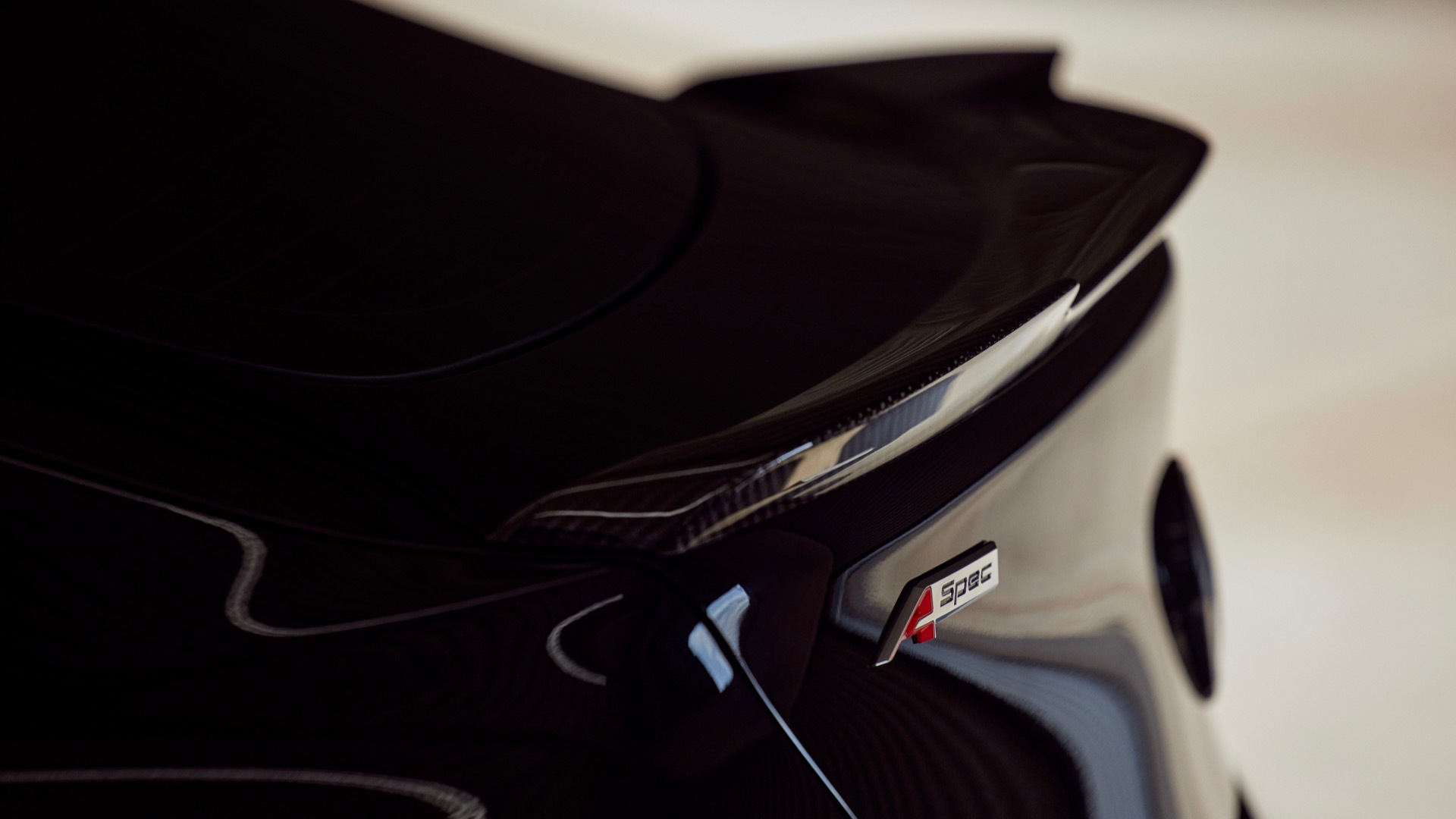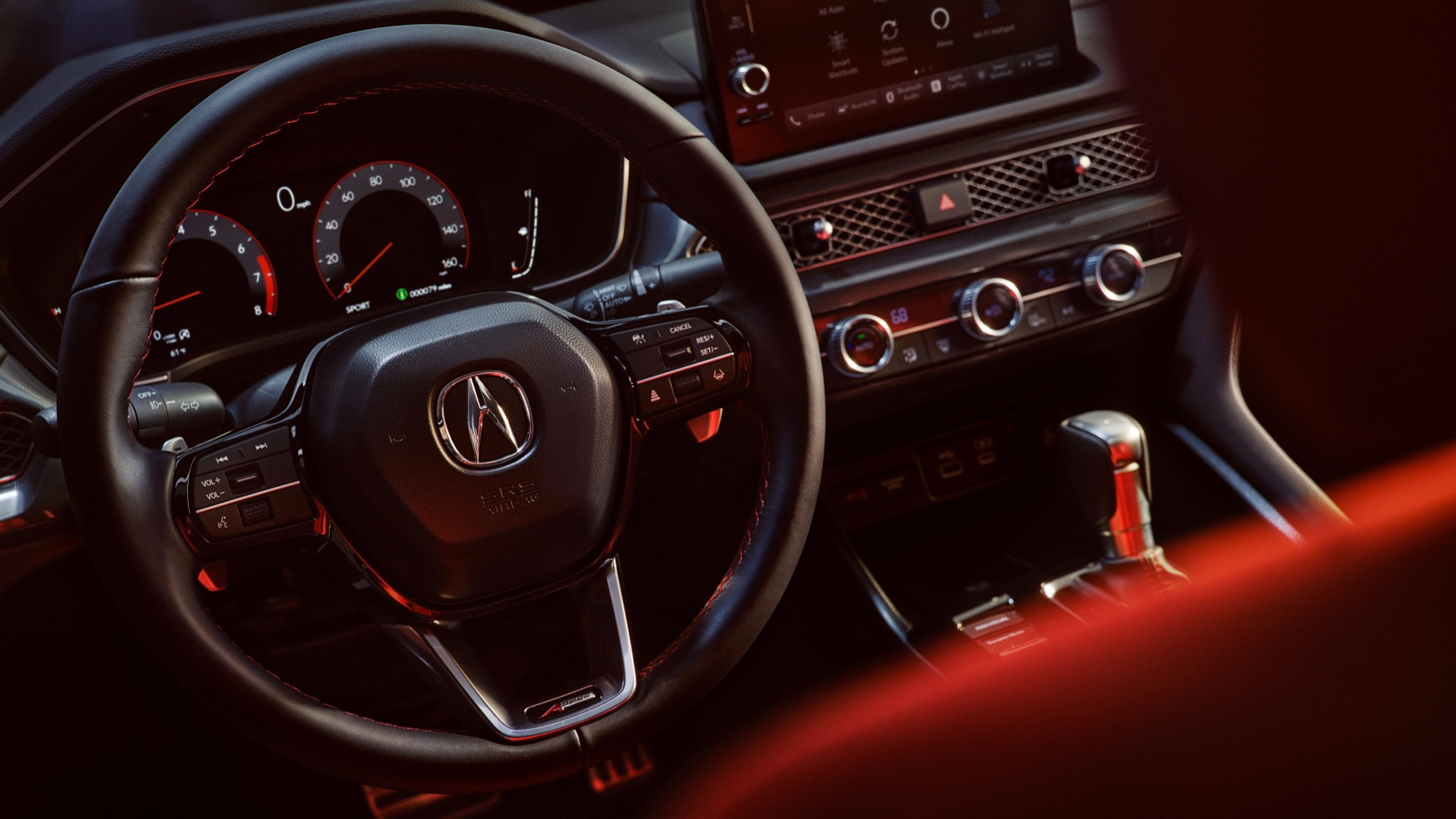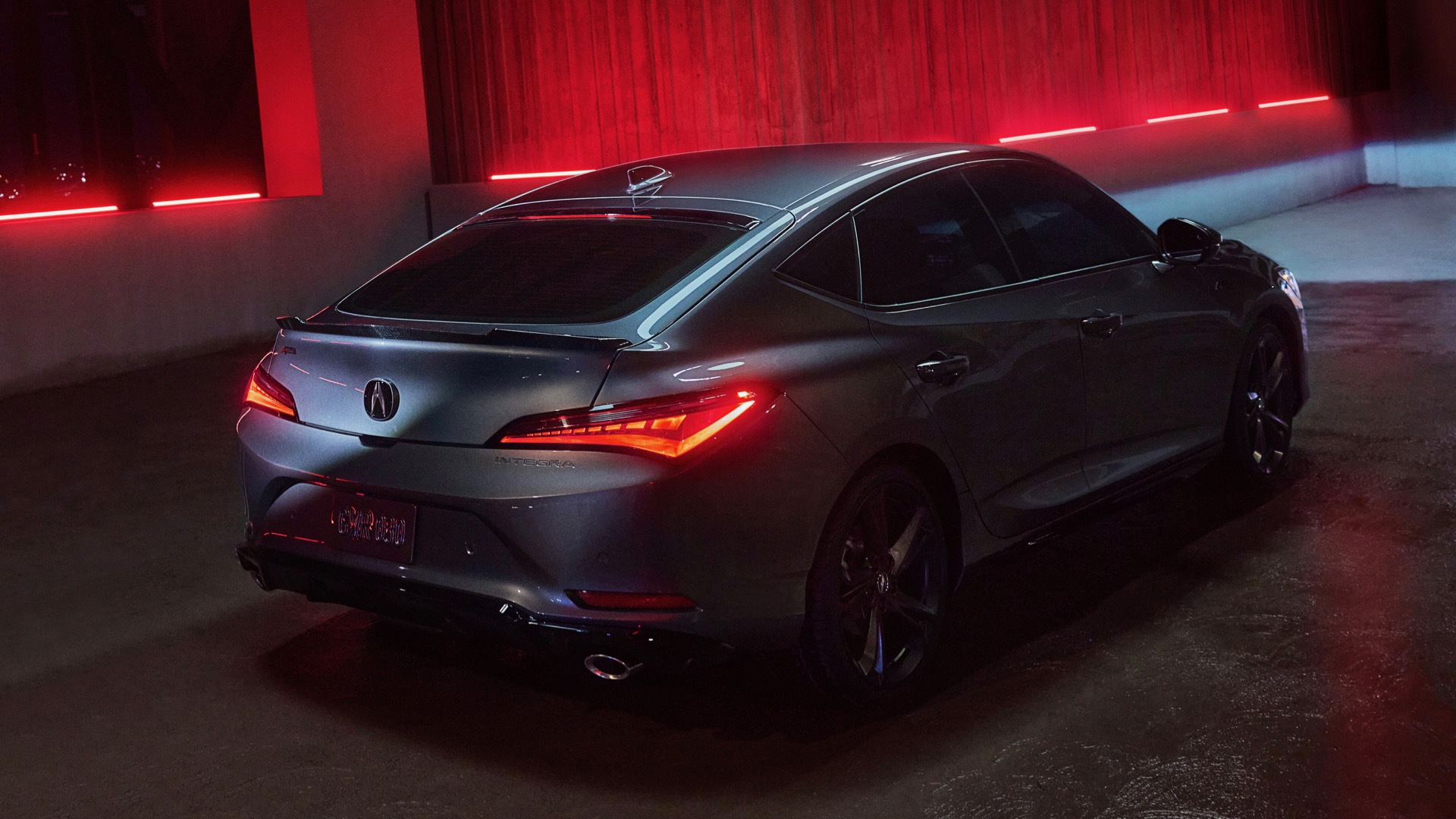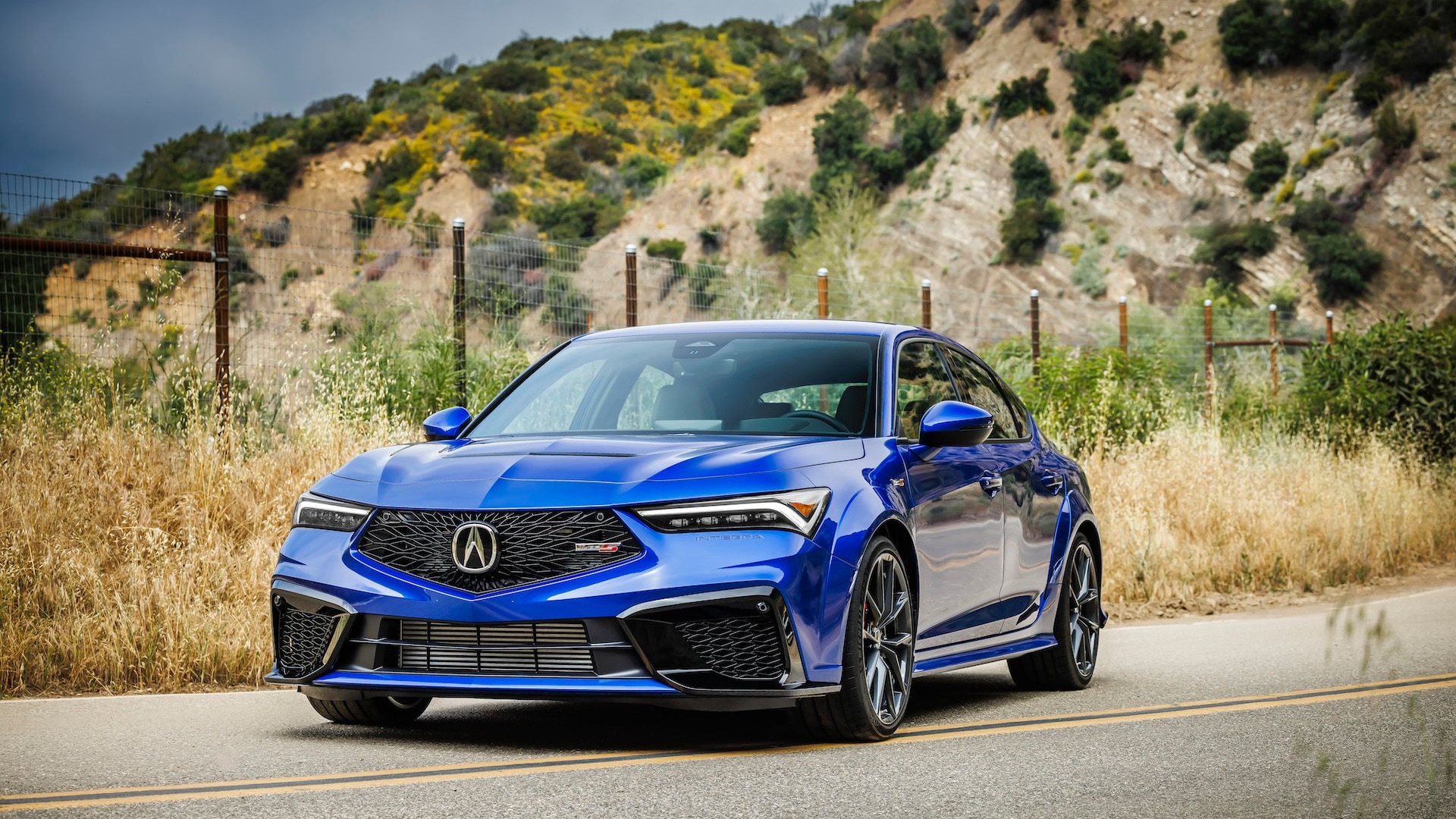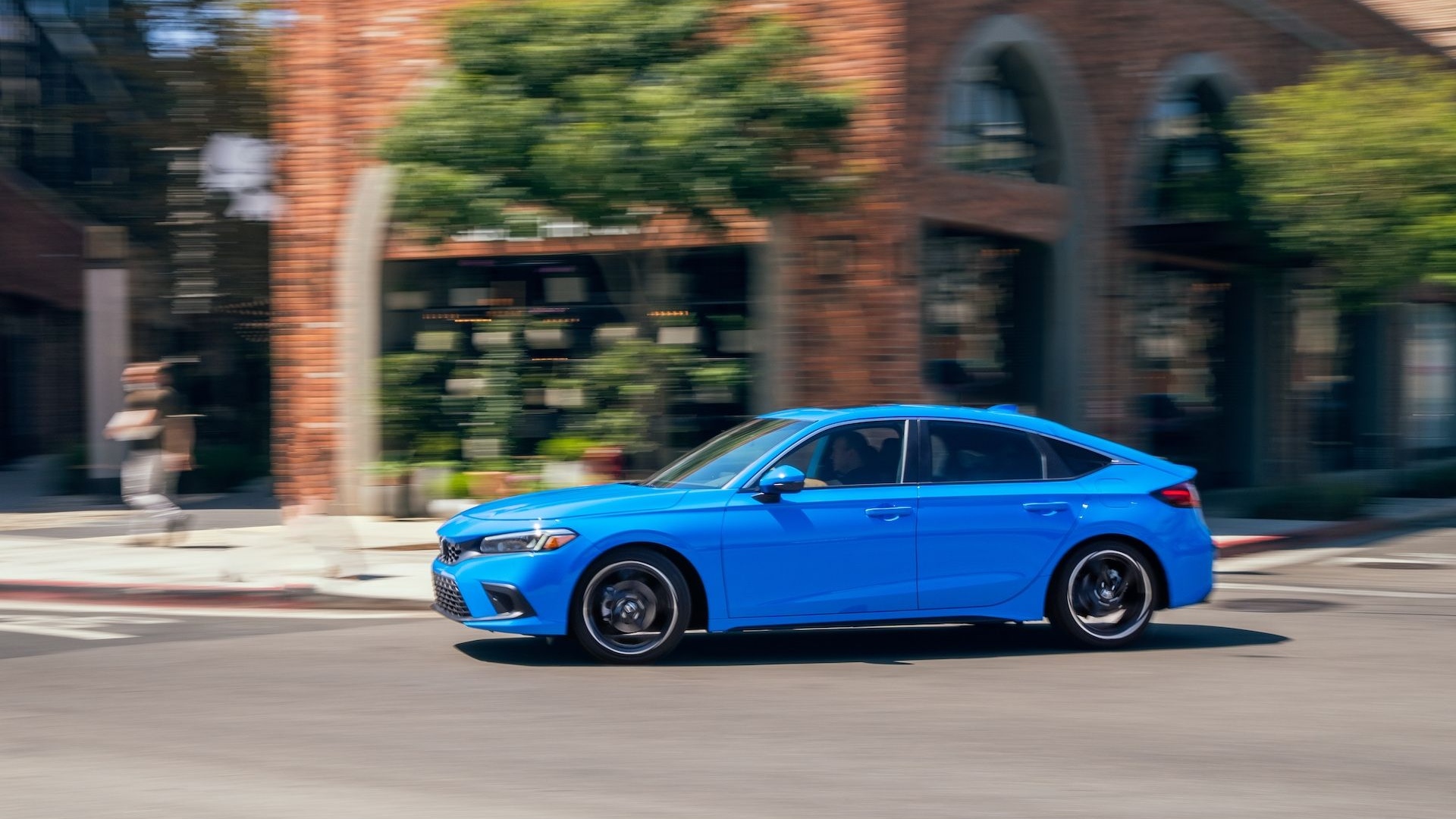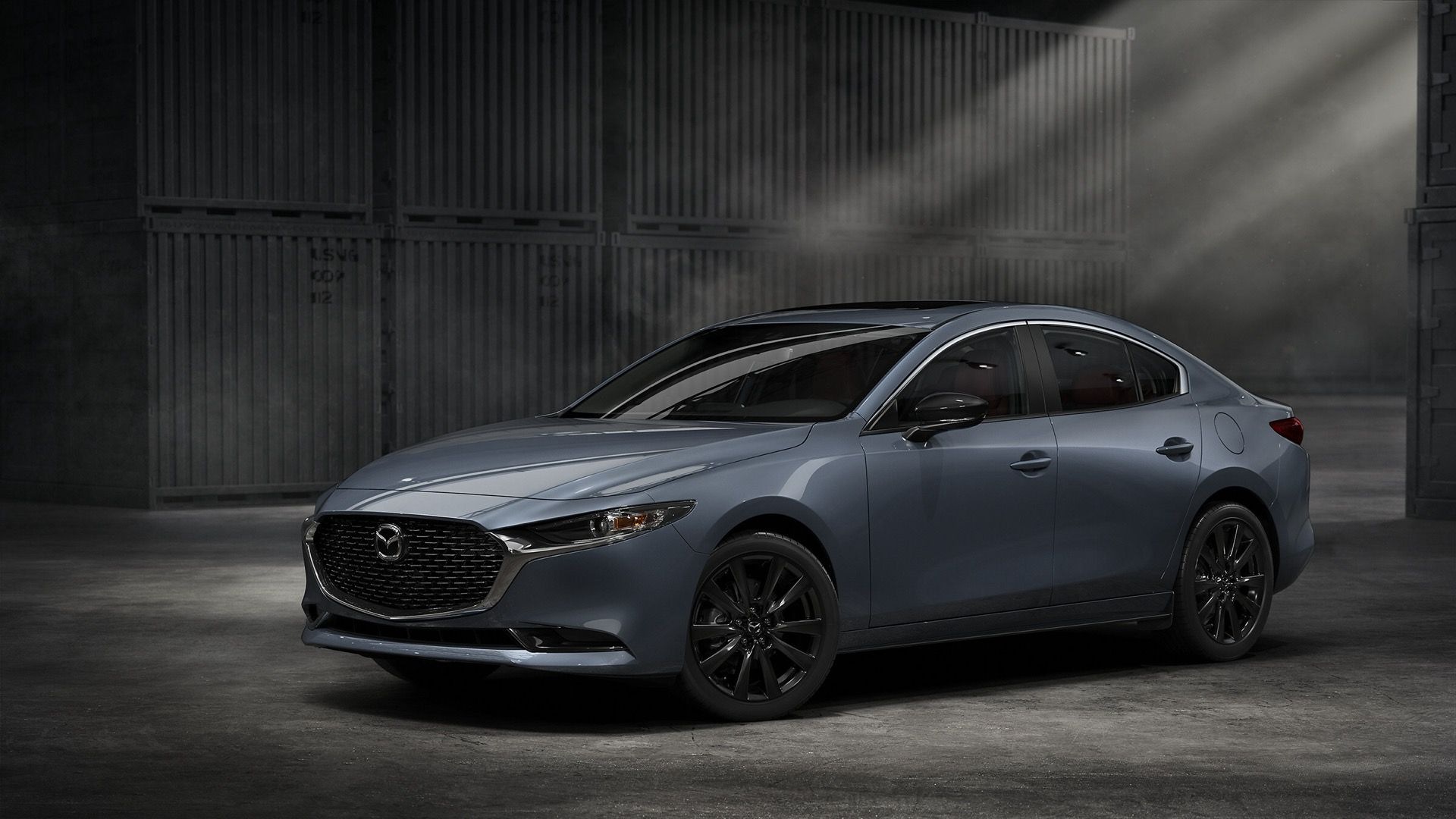It hasn’t been five minutes into my drive of the 2023 Acura Integra and I’ve yet to take a corner at speed, but I already like this car. The way the steering firms up on the freeway, the adaptive dampers’ ability to smother bumps while contributing to a planted feel, the snick-snick motion of a Honda/Acura manual shifter—it all adds up to a new Integra worthy of the reverence car enthusiasts have for the endearing Integras of the 1990s and early 2000s
My test car is an Integra A-Spec with Technology Package model. At $36,895, it’s the only way to get the manual transmission. It sits atop the lineup, yet it costs $10,000 less than the average transaction price for today’s passenger vehicles. Buyers can spend as little as $31,895 and still get a five-door hatchback with a premium ride, a high degree of refinement, and a 200-hp 1.5-liter turbo-4, but the 6-speed manual is far too fun and this model’s extra equipment is too generous to justify spending less.
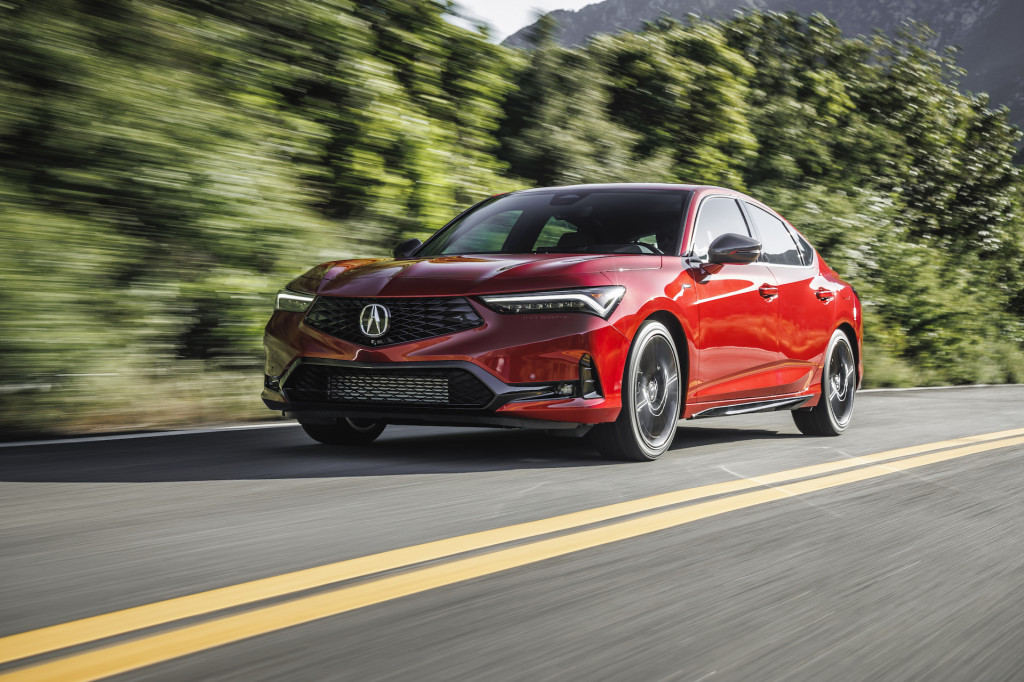
2023 Acura Integra

2023 Acura Integra

2023 Acura Integra
Balanced dynamics
The new Integra has nothing to do with the underwhelming ILX it replaces. It rides on a version of Honda’s global small car architecture that’s modified for the Integra. It’s made of 33% aluminum for lighter weight, it uses high-strength steel to reinforce key areas, and Acura further strengthens it with extensive structural adhesive. The Honda Civic Si is its closest sibling, as both cars use the same 107.7-inch wheelbase, but the Integra stretches 6.8 inches longer and is 5% stiffer than the Civic hatchback, according to Acura.
The Integra uses a MacPherson strut suspension up front (sorry, no double wishbones like the good ol’ days of the 1990s), and a multilink independent rear suspension. The Tech Package model employs adaptive dampers, a first for the Integra, and when buyers choose the manual transmission, Acura throws in a limited-slip differential.
Acura engineers did a great job of tuning every aspect of the suspension. While the adaptive dampers really help already good ride and handling, the tuning of items like the 27-mm hollow front stabilizer bar, solid 17.5-mm rear stab bar (18 mm on the A-Spec), and a large rear compliance bushing, among other elements, create this kind of premium ride quality.
Most of my time is spent in the Tech Package model. Cycling through the drive modes, the ride is soft but controlled and it never firms up too much, even in Sport mode, which also improves body control.
Through corners, the car leans little, tracks a consistent line, and the A-Spec’s limited-slip differential helps it put the power to the pavement without spinning the inside wheel. Thrown hard into a corner, the car first responds with slight understeer that can change to oversteer by lifting suddenly off the throttle. Skilled drivers can take advantage of that in an autocross, but stickier tires than the A-Spec’s standard all-season 235/40R18s (and especially the base model’s 225/50R17s) could allow more grip in fast corners.
The road feel through the small-diameter steering wheel, and the car’s response to steering inputs both contribute greatly to the Integra’s charm. One reason is the steering has an ultra-quick 11.52:1 ratio (slightly quicker at 11.33:1 in the base model), but it doesn’t feel that quick or make the car darty on the freeway. It has electric assist and a mechanical variable ratio that dials in quicker responses the more the driver turns the steering wheel.
Though sporty, the Integra shouldn’t be confused with a performance car. Aside from the lack of performance tires, it also has street brakes, though they’re larger than those of the ILX. Up front, it sports vented 12.3-inch discs with 2-piston calipers and out back it gets 11.1-inch solid rotors with single-pot calipers. They get the job done during a commute and in limited spurts of canyon driving, but don’t count on them to handle consistent heavy braking situations.
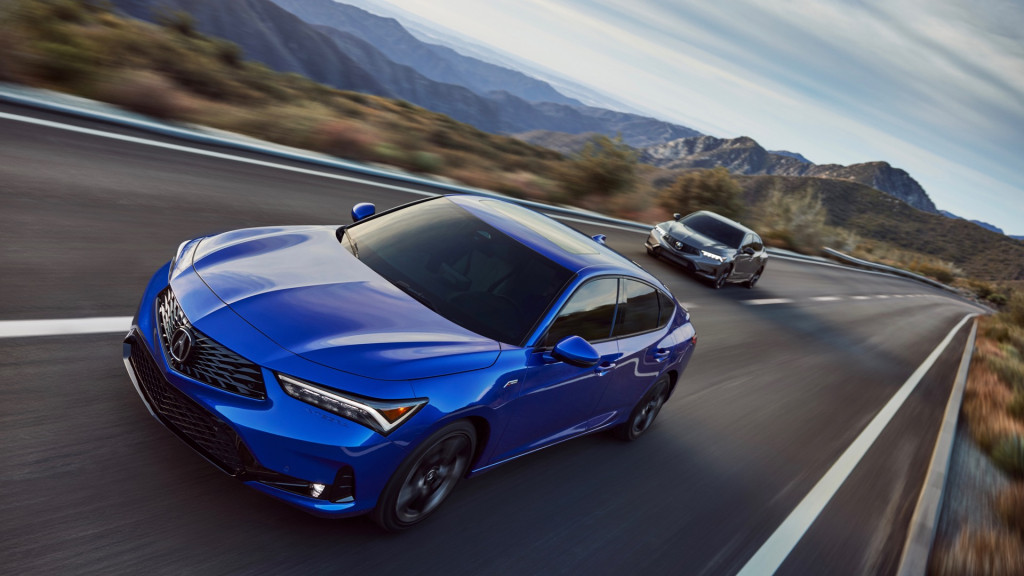
2023 Acura Integra
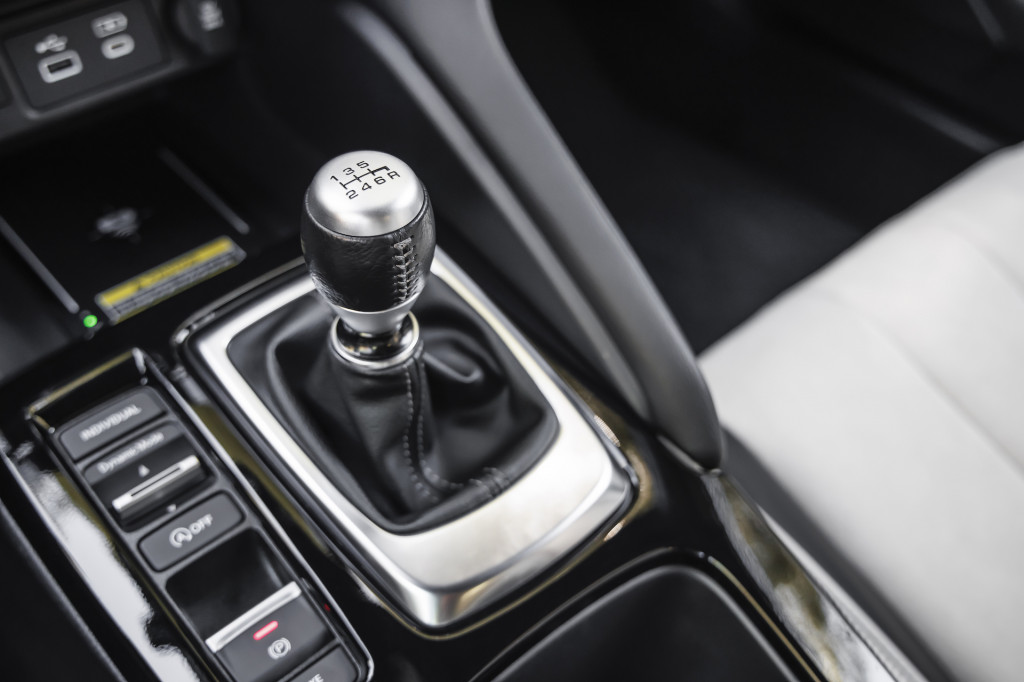
2023 Acura Integra
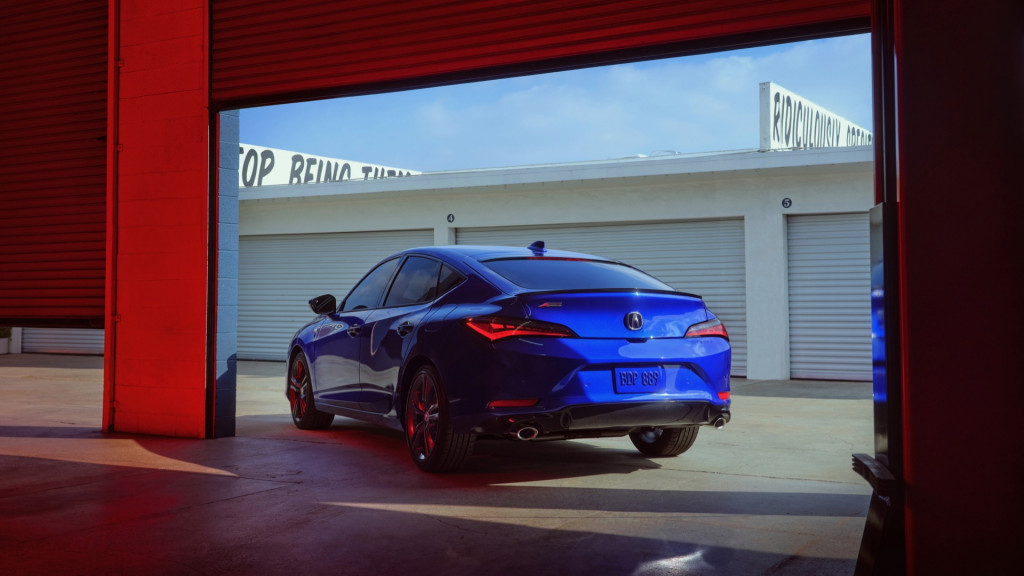
2023 Acura Integra
21 years, no more horsepower
Acura considers the RSX, which was built from 2002 to 2006, to be a part of Integra history, but not the more staid ILX. Lurking under the hood of the RSX was a 2.0-liter inline-4 that made 160 hp in standard trim and 200 hp in the Type S model. Twenty-one years on, the Integra makes…200 hp. At first blush, that’s not a lot of growth in two decades.
The difference is how that power comes on. The naturally aspirated engine in the 2002 Integra Type S relied on VTEC technology that switched to a different cam profile at higher rpm. It had relatively little power down low, and drivers only tapped into the best power if they had a heavy foot.
The 2023 Integra gets the car’s first turbocharger. It’s strapped to a 1.5-liter inline-4 and helps to conjure 200 hp at 6,000 rpm and 192 lb-ft of torque from 1,800 to 5,000 rpm, while the 2002 engine’s max hp arrived all the way up at 7,400 rpm and its torque didn’t max out until 6,000 revs. While the RSX’s VTEC system switched cam profiles at a relatively low 2,200 rpm, it didn’t really bump up in power until 4,700 rpm when a second intake runner opened.
The turbo makes the new Integra’s power easier to access, especially in Sport mode, but the new car is likely no faster in the 0-60 mph sprint. Acura estimated 6.4 seconds for the RSX Type S in 2002, and while the company won’t quote a time today, it feels like it’s in that range or slightly quicker. However, it’s easier to accelerate to 30 mph or get up to highway speed in today’s model without railing on the throttle pedal. Despite the extra power down low, the Integra doesn’t suffer from torque steer as the power flows to the pavement through the front wheels.
The fun way to exploit the Integra’s power gets the driver involved with the powertrain. The top Integra A-Spec with Technology Package comes with a 6-speed manual. Like other fantastic Honda/Acura manual transmissions, it boasts a slick shifter with short throws, positive action from gear to gear, and a light but predictable clutch. The other option, a continuously variable automatic (CVT) with seven simulated gear ratios, tends to slur its “shifts.” The CVT’s Sport mode quickens those stepped ratio changes subtly; it’s something akin to drinking three tequila shots instead of six, and the CVT fades into the background when toddling around town.
While the 1.5-liter turbo qualifies as a good engine, it’s not great. Over time, power should grow, and by now I’d expect a 2.0-liter turbo-4 with about 250 hp, along the lines of the Subaru WRX. Perhaps a forthcoming Type S model (Acura has said it will add a Type S variant to every model) could remedy that.
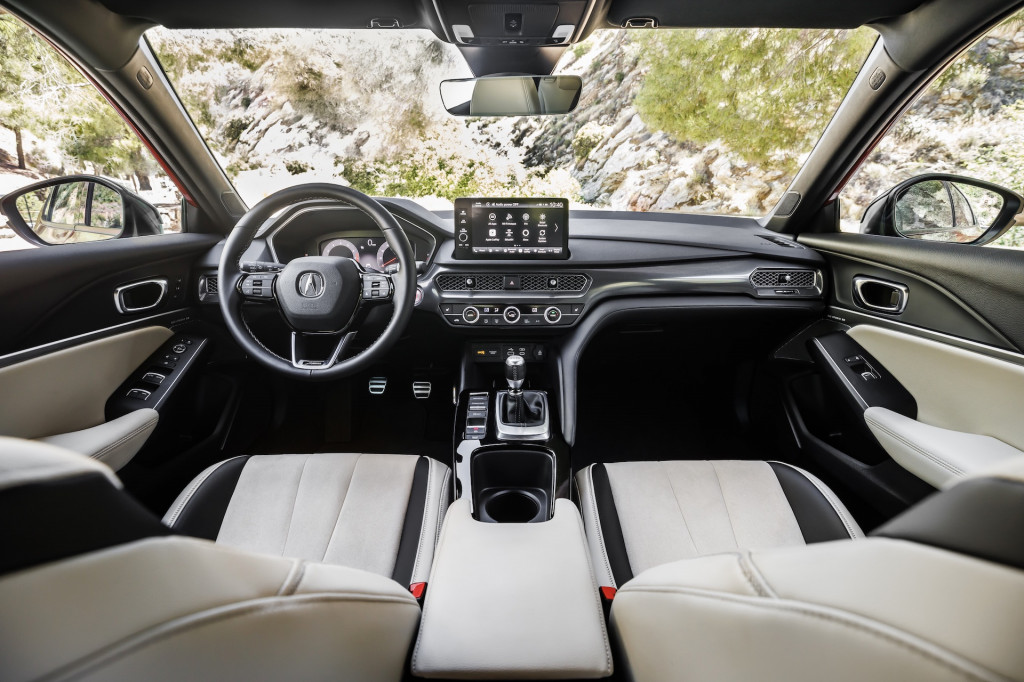
2023 Acura Integra
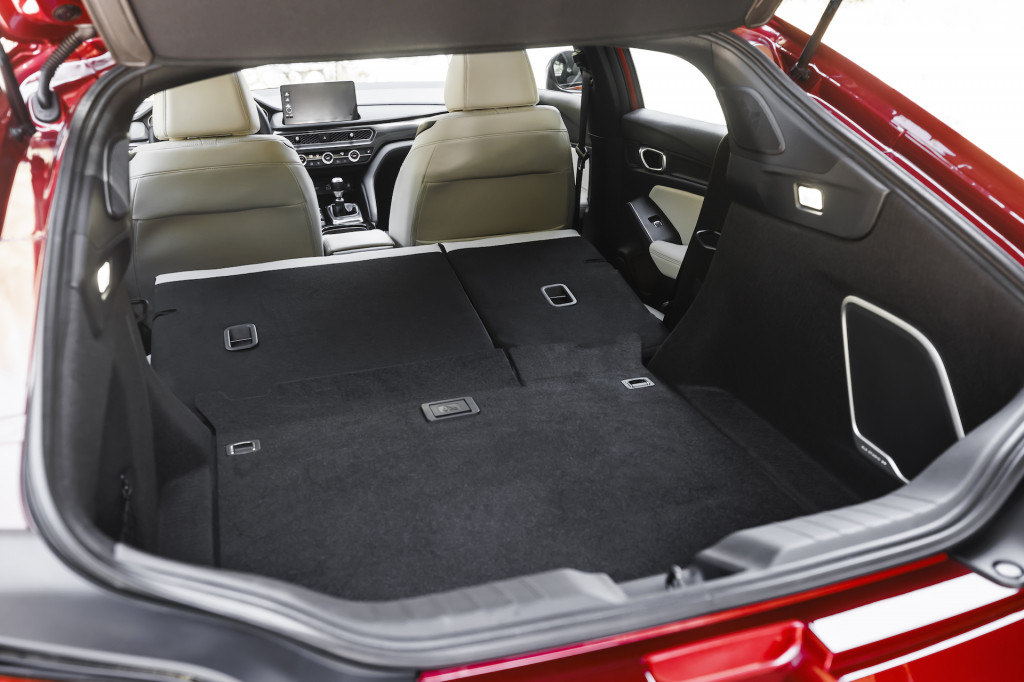
2023 Acura Integra

2023 Acura Integra
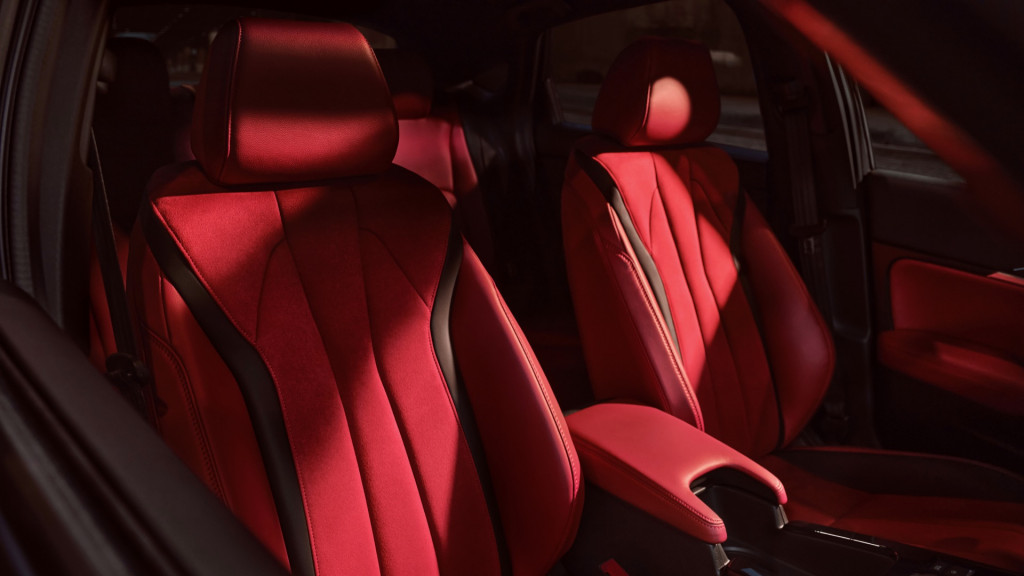
2023 Acura Integra
Bigger, techier cabin
Compared to the ILX it replaces, the Integra boasts a more spacious, techier cabin. A standard 10.2-inch digital instrument cluster provides the driving information, while a standard 7.0-inch touchscreen or a 9.0-inch version in the A-Spec with Technology Package model handles the infotainment. The base screen feels small these days and even the larger screen isn’t that big, but both are far easier to use than the awkward touchpad interface in other Acuras.
The cabin offers sportiness and decent room, with enough luxury in the form of padded, soft-touch materials and good fit and finish, to justify the Integra’s premium segment pricing. The driver sits on a well-bolstered seat with standard synthetic leather upholstery and 8-way power adjustments, but the front passenger gets just manual adjustments. The Tech model adds synthetic suede seat inserts for better grip, active noise cancellation for an even quieter cabin, a 12-way power driver seat with memory, a 4-way power passenger seat, and wireless instead of wired versions of Apple CarPlay and Android Auto.
The Integra grows in size compared to the ILX, with a 2.6-inch longer wheelbase and an overall length that’s 3.6 inches longer. The added wheelbase gives the rear seat a mid-size car-like 37.4 inches of leg room, but low seat bottoms don’t support thighs enough for long trip comfort. Better yet, the switch from a sedan to a hatchback body style improves rear cargo space from 12.4 to 24.3 cubic feet. You can also fold down the rear seats to open up a generous cargo hold.
The ILX disappointed when it arrived 2013 with its pedestrian 150-hp engine, less-than sporty dynamics, and oddball styling. It got a more powerful, albeit naturally aspirated, 201-hp engine and became a better car over the years, but it never captured the sporty character Acura pioneered with the Integra. The reborn Integra is a return to form, with a hatchback design, a satisfyingly sporty feel, and a torquier engine. You’ll see it, too, within the first five minutes of a test drive.
Acura provided airfare, meals, and lodging for Motor Authority to bring you this hand-crafted, artisanally curated firsthand report.


